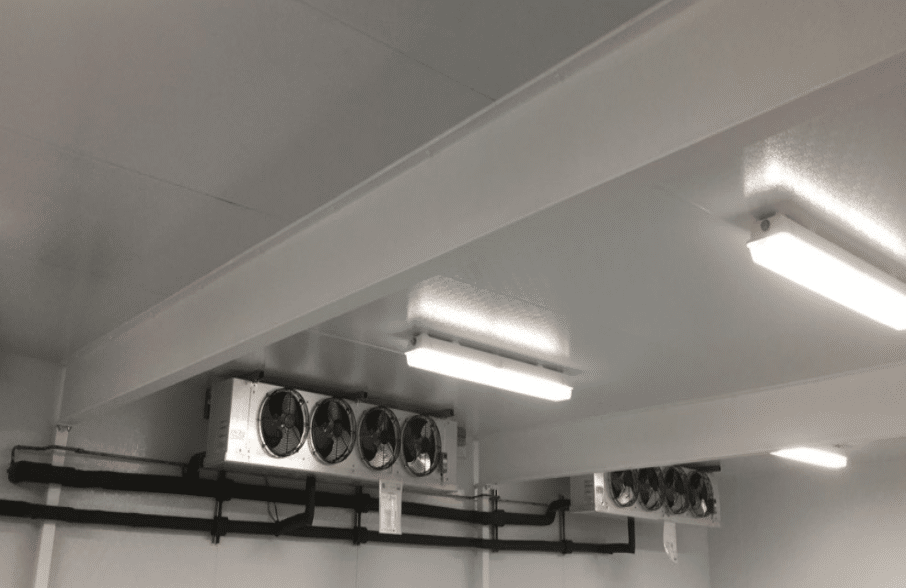To keep walk-in coolers and freezers operating efficiently, it’s essential to determine appropriate defrost cycles. Local climates and the way in which the unit is used greatly affects the optimal defrost cycles and duration times. Let’s take a look at some factors to consider when setting defrost cycles.
Refrigeration systems function to remove heat and dehumidify air. As humid air enters a walk-in, a heat exchanger known as the evaporator removes moisture by condensing on the evaporator coil. Because evaporators have low surface temperature in freezers, moisture may freeze on its coils. When this happens, frost and ice accumulate, interfering with air flow and degrading the efficiency of the evaporator. This makes it difficult to maintain temperatures and can result in spoiled goods. Because of this, evaporator units must be defrosted periodically to remove the ice from the coils.
The number and duration of defrost cycles varies and is an adjustment that should be programmed during the unit’s installation.
In many applications, a timed or auto-defrost cycle is necessary to keep the evaporator coil free of ice. During the defrost cycle, the compressor is shut off. Within electric defrost systems, a small heater in the evaporator is used to melt frost from the finned coil surface.
As the ice is melts from the coils, the resulting liquid water is caught in a drain pan and removed from the unit via a condensate drain. A p-trap should be used on the drain line so that air cannot enter the unit.
It is critical to optimize the duration of the defrost cycle so it completes once the ice has cleared the coils. If the defrost cycle runs too long, excess heat will be added to the box in the form of water vapor. This water vapor can condense on the ceiling and will freeze, creating pebbling of ice on the ceilings. In successive cycles, this moisture will drip down from the ceiling to the floor, resulting in a dangerous, slippery frozen floor.
The walk-in’s location can greatly affect the required defrost cycle times and durations. A humid area, such as the Southeast, may require more frequent and longer defrost cycles than an arid region, like the Southwest. The unit’s use will also affect defrost cycle requirements. If the doors are frequently opened for long periods of time to load the unit, moisture can enter and remain inside. This moisture builds up as frost and ice on wall, ceiling, evaporator and product surfaces. Installing strip or air curtains to keep warm air out can help, as well as programming the fan to cut off whenever the door is opened.
It can be challenging to determine the optimal defrost cycle times and duration for your commercial walk-in cooler or freezer. Working with your local refrigeration expert to determine this will be key to ensure that units are operating at peak efficiency.
KPS Global® is the industry-leading manufacturer of insulated panel systems, supplier of aftermarket parts and replacement equipment, and provider of seamless installation services. Their cutting-edge innovation and unyielding commitment to customer satisfaction, allows them to deliver solutions for the supermarket, convenience store, scientific, and industrial markets. Learn more here.



